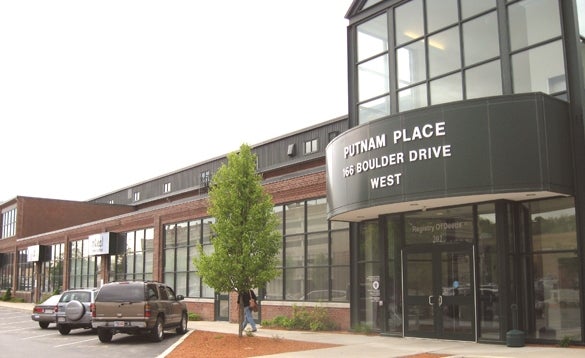In 1998, General Electric closed its Fitchburg steam turbine plant, laying off 600 workers and devastating the city’s central neighborhoods. For the next decade, the Fitchburg Redevelopment Authority worked to repair the damage.
Today, there are few signs of a great revival in the beleaguered downtown. But 200 jobs have quietly returned to the GE plant, now known as Putnam Place. The 280,000-square-foot complex will soon be 75 percent occupied, according to Thomas Szocik, executive director of the Redevelopment Authority, and improvements to the facility are still moving forward.
The progress has not come without a price tag. Szocik said about $14 million in state and federal grants and loans have gone into Putnam Place. To some, like Rachel Rosenfeld, a local gadfly who briefly began a run for mayor this year before dropping out of the race, that’s just too much to justify.
“How many taxpayer dollars are they going to spend to create a couple jobs?” she said. “Welfare might be cheaper.”
Jobs, And Good Jobs
But Szocik contends that the significance of Putnam Place is not just the number of jobs created but their quality. By far the biggest employer at the old plant is DRS Power Tech Inc., a division of New Jersey-based defense contractor DRS Technologies. Of DRS’s 165 local employees, Szocik said about 80 are engineers and 10 percent have PhDs, which translates to a “really high percentage of six-figure jobs.”
DRS’s operation in Fitchburg began in 2003 when it bought out a local company founded by former GE employees that was already leasing space at Putnam Place. Rich Armstrong, vice president and general manager of DRS Power Tech, said that if the Redevelopment Authority hadn’t fixed up Putnam Place, his company would probably not have an operation at the current scale in the local area today. The high bays with the capacity to accommodate 100-ton cranes makes much of DRS’s work at the site possible, he said.
And DRS is continuing to expand—with continuing government help. Last year, the state forked out a $1.5 million grant from the Massachusetts Opportunity Relocation and Expansion (or “MORE Jobs”) program for a new DRS turbine testing facility at Putnam Place. Szocik said the company has signed a new lease for 3,500 additional square feet to accommodate the expansion and create about a dozen new jobs, with more promised for the future.
Higher Math
Assessing whether an investment of public money is justified is a complicated matter, even for the agencies charged with deciding where to put that money. Darrell LeMar, deputy director of communications for the Executive Office of Housing and Economic Development, said some of the grants his office administers require the creation of a certain number of jobs while others have no such requirement. Then there are other factors, like whether new jobs are really coming to the state or just moving from one community to another.
MORE Jobs grants generally require the creation of 100 or more jobs, but Szocik said that demand didn’t come into play for the recent DRS grant. In that case, he said, Massachusetts was in competition with Mississippi for a project that involved not just DRS but also Rolls Royce. If Mississippi won, Szocik said, Rolls Royce would have closed a facility in Woburn, and DRS might have begun moving jobs out of Massachusetts, too.
“It’s one of those kind of slippery slope things,” Armstrong said. “We were concerned about that being the beginning of the end of manufacturing in Fitchburg.”
So, the state agreed to the grant with a requirement that the project create just 16 new jobs.
LeMar said determining which projects should receive funding is always a judgment call because the state is looking to grow companies that will bring in sales from outside the state, buy products from within the state and pay employees enough that they will spend plenty of money at local businesses.
John Regan, the executive vice president for government affairs at the Associated Industries of Massachusetts, said he thinks it’s fair to adjust standards for incentives based on various factors, including what sort of area the money is going to.
“For different communities there are different standards,” he said. “For some communities a couple hundred or 500 new jobs would be a real coup and for other areas a couple hundred or 500 new jobs wouldn’t have that much of an impact.”
State Rep. Stephen L. DiNatale, who worked for the latest MORE grant as Fitchburg’s representative, said he has no doubt that the money invested in Putnam Place over the years is worth it.
Regan said that, philosophically, AIM isn’t thrilled with the idea of offering any special business incentives at all, preferring that the state direct its resources toward improving general conditions for all companies. But, given the competition from other states and countries, he said that’s probably not a realistic stance. “To not have incentives in grants is, in effect, unilateral disarmament,” he said.
The state is not slowing down in funding Putnam Place’s growth. This April, Fitchburg got a $566,000 grant to improve truck access to the last empty building at the site.
Szocik said at least one wind turbine company has already been looking at moving in.

